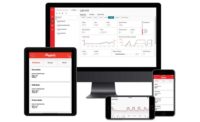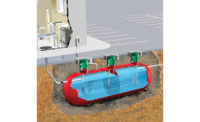In January 2013, the Environmental Protection Agency issued the final rule limiting emissions of mercury, hydrogen chloride, particulate matter and other pollutants from industrial boilers through the National Emission Standards for Hazardous Air Pollutants.
The ruling, also known as the IB MACT, is shorthand for the maximum achievable control technology for industrial boilers. The emissions limits are dependent upon the fuel being fired and when the boiler was placed in operation. It is estimated the majority of boilers in the United States affected by IB MACT received a one-year compliance extension until Jan. 31, 2017. For plants with an extension, the time to act is now: Becoming compliant with IB MACT starts with identifying the technology strategy that best fits your industrial boiler and your organization.
Of the more than 600 boilers affected by the IB MACT, more than half are believed to be at risk for noncompliance with the IB MACT emission limits for HCl based on the coal they typically fire and their air-pollution control configuration. These are boilers in industries such as paper manufacturing, chemical manufacturing, food manufacturing and universities.
For industrial boilers, there are three generally accepted technologies that can be used to reduce acid gas emissions such as HCl. These options include reducing the chlorine entering the system by reducing the amount of coal fired or eliminating it completely, limestone or lime-based scrubbers and dry-sorbent injection.
Highlands Ranch, Colo.-based ADA-ES – a subsidiary of Advanced Emissions Solutions – reached out to more than half the boilers identified as “at risk” to determine the approach the industry was using to meet the new regulations. The group found less than 10% believed they were comfortably in compliance with the new regulations and 22% of the boilers had either shut down or were planning to do so before their compliance date.
Converting to natural gas was the predominant approach to compliance: 57% of the units contacted had already converted to gas or were planning to make a full or partial conversion before the compliance date.
As indicated by ADA-ES data, fuel switching to natural gas is very attractive, especially at today’s low gas prices. However, there are technical issues to consider. The difference between the heating values of coal and gas may make steam temperature requirements difficult to achieve in boilers designed to fire coal — potentially requiring tube retrofits to maintain the same steam outlet temperatures.
It’s important to note when considering fuel switching that it typically requires changes to the burners, burner management systems, fuel supply piping or coal yard handling and conveyance, pulverizers, gas scrubbers and conditioning equipment. In order to achieve reliable results, these and many other design and engineering considerations must not be overlooked.
Scrubbers
The survey also indicates less than 3% of plants were relying on scrubbers to meet compliance. The process of procuring, permitting, and installing a scrubber requires more than a year of planning and execution. Of the 3%, all were already operating its scrubbers or were well along in the permitting and construction process to meet the January 2017 deadline.
Scrubbers can be wet scrubbers (wet flue gas desulfurization) or dry scrubbers. The difference between the two technologies is the feedstock used and the equipment required.
Wet scrubbers are more effective at removing SO2 and HCl than dry scrubbers, achieving more than 90% capture. They also have the lowest cost reagent, but the highest initial capital and installed cost. Wet scrubbers can cost $10 million or more depending on the size of the system.
The systems work by contacting combustion gas with an aqueous limestone slurry of sorbent, which reacts with the acid gases producing solid byproducts such as gypsum. The maintenance costs of wet scrubbers and the associated mills can be quite high. Limestone slurry can be difficult to maintain due to the potential for clogging, erosion and the very high-pressure pumping systems. Also, one byproduct, calcium chloride, is corrosive to stainless steels, requiring periodic replacement of high-cost scrubber parts. Given this, it is not surprising that so few industrial boilers installed wet scrubbers to meet IB MACT compliance.
Dry scrubbers often cost less than half of wet scrubbers to purchase and install and have a significantly reduced footprint. However, dry scrubbers have higher reagent costs and lower removal rates, typically less than 80%, due to the limited recirculation and less residence time in the flue gas.
Spray dryer absorber processes combine lime with water (slaking) and distribute the slurry into a vessel to contact the flue gas. The lime and captured pollutants are then collected by the downstream particulate control equipment. Some of the most troublesome problems with SDAs involve the lime slaking process.
The mechanical spreaders and atomization equipment used to distribute the slurry in the flue gas tend to require significant maintenance to ensure reliability. SDAs also significantly increase the particulate loading to the downstream particulate collection device. Most of these systems are not designed for the additional loading, requiring upgrades or the addition of a fabric filter. This significantly increases the costs associated with this approach. Based on the survey, no boilers had installed an SDA to meet MACT requirements.
Dry sorbent injection
Dry sorbent injection is the MACT compliance technology of choice for plants that choose to continue using a noncompliance coal. Some of the plants with a one-year extension haven’t selected their DSI vendor. The timeline to procure, fabricate and install a DSI system is usually six to 10 months, which leaves little time for these plants to finalize their plans before the January 2017 deadline.
DSI systems typically cost less than $1 million for an industrial system. However, the sorbents used for DSI cost more than limestone used in wet scrubbers. Sorbent injected into the duct in a dry form is activated by moisture in the duct to start the exothermic chemical reactions needed to capture acid gases before being collected by the downstream particulate control device. Sorbents typically are hydrated lime, sodium sesquicarbonate (Trona) or sodium bicarbonate.
DSI does not utilize sorbent recirculation, so injection rates of sorbent tend to be higher than in wet scrubbers for the removal of SO2. However, for the removal of acid gasses such as HCl, the injection rates can be quite low. The lack of a reaction vessel reduces the capital costs to a small fraction of the cost of a scrubber or even the cost of fuel-switching equipment requirements.
DSI can be implemented within a short timeframe — perhaps the most important consideration for boilers that have not finalized compliance plans. Scrubbers and fuel switching projects tend to have multiyear schedules. DSI systems can be contracted and installed well within a year.
DSI system components include a storage system, metering system, conveying system, milling system (for sodium-based sorbents) and distribution system. Figure 1 shows an example of a DSI system for an industrial boiler.
In this example, sorbent is delivered by a self-unloading truck directly into the sorbent storage silo. For installations requiring small amounts of sorbents, a silo might not be necessary. Sorbent can be fed directly from bulk bags delivered to the site.
The injection grid can consist of a single injection port or several injection ports, depending on the number of ducts and the cross-sectional area of the ductwork. The injection lances typically are open-ended steel pipes inserted directly into the flue gas stream. Sorbent use can be minimized by using a static mixer to optimize sorbent dispersion. A static mixer does not have moving parts and is designed for the individual duct cross-section. Additional mixing will require some additional pressure drop, but with careful design this additional pressure drop can be kept below 0.5 in. of water.
For example, consider an industrial boiler with an existing DSI system that injected Trona for HCl removal upstream of a baghouse. The plant wanted to reduce sorbent injection rates and felt improved mixing would achieve that goal. A static mixer was installed in the duct upstream of the baghouse. Since the duct was circular, the mixer was custom-designed for the duct cross-section, similar to that shown in Figure 2. Once the mixer was installed, sorbent usage at the plant went down (Figure 3), resulting in annual savings of more than $400,000 to meet the HCl compliance requirements in the IB MACT.
With the IB MACT compliance date just months away, now is the time to make sure you have the right compliance plan in place to ensure cost-effective and reliable control of acid gas emissions.
If you plan to continue firing coal with medium-to-high levels of chlorine, consider working with an experienced technology provider to expedite the process and assure reliable compliance.
Author bio: An internationally-recognized expert in mercury control, Sharron Sjostrom has more than 25 years of experience developing technologies and commercializing products that reduce emissions from coal-fired power generation. Sjostrom has published more than 50 technical papers and is an inventor on 16 patents. She currently serves on the National Coal Council and the Institute of Clear Air Companies.





